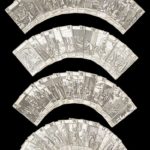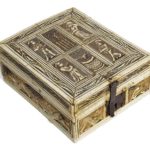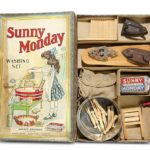Mystical Card Games. Playing cards have been used for divination for centuries. The Tarot is probably the best known fortune telling game but there were other games such as Dream Cards and Astrological Cards.
Below are some examples and price guides of antique, mystical card games including “The Court Game of Astrology” and four 18th century Indian dream cards.
CARD GAME – ASTRONOMY The Court Game of Astronomy, a complete deck of fifty-two engraved pictorial playing cards, comprising four suits of thirteen, the suits hand-coloured (blue, red, green and yellow), one card torn, one with small stain but generally clean; 32-page rule book in original green watered silk wrappers; together in gilt-lettered publisher’s morocco slipcase (lacking ends), 12mo (95 x 62mm.), William and Henry Rock, Publishers of Scientific Games, [c.1835]
COMPLETE SET, WITH RULE BOOK, of a card game intended to “impart considerable information on the sublime Science of Astronomy”. The four suits represent the four seasons, and “the pip cards are divided among the Signs and Constellations according to the period of the year over which they preside”. Numbers 8, 9, and 10 of each suit depicts the signs of the Zodiac, the others figures of the Roman pantheon of constellations.
Sold for £ 1,250 inc. premium at Bonham’s in 2016
Four dream cards India, Bilaspur, 18th century Each dream card depicting a figure bordered by red, with text on the verso Opaque pigments on wasli 3 in. (7.6 cm.) high, the largest
Sold for USD 1,000 at Christie’s in 2008
Vintage double-deck tarot cards by Gallo Mexico. Gallo Extra Intransparente by Clemente Jacques y Cia, S.A., c.1950-1960’s. One deck appears to have been used more than the other. Some stains and wear. Wrappers are torn.
Sold for $200 at LeMay & Co. Antiques & Estates LLC in 2021
Initiation Cards (Tsakalis) early 15th century
Tsakali cards were used by itinerant teachers moving from one monastery to another in order to evoke Vajrayana Buddhist deities. When laid on the ground in the form of a mandala, as seen here, they functioned to create a fixed sacred space like that of a temple. The deities shown on these initiation cards include the Tathagata Buddhas, various bodhisattvas, fierce protectors, and the six possible realms of rebirth seen across the bottom. They probably were made by a Nepali artist for a Tibetan patron of the Nyingma school of Tibetan Buddhism.
The Metropolitan Museum of Art
Playing cards–Besançon tarot BESANÇON: J. JERGER, [1810] 77 (of 78) cards, each 122 x 67mm., stencil-coloured woodcuts with imprint stamped separately, patterned card versos, 10 mounted in a frame, the rest in a folder attached to the back of the frame, lacking card XVII
Sold for 1,250 GBP at Sotheby’s in 2014
The Popish Plot Pack of Playing Cards ca. 1679 (made)
These playing cards are engravings. The images were made by cutting lines into the surface of a flat piece of metal, inking the plate and then transferring the ink held in the lines onto a sheet of paper. Francis Barlow’s original drawings for the engravings are in the British Museum, London.
The Popish Plot was a fictitious Catholic conspiracy to kill Charles II that the Reverend Titus Oates claimed to have uncovered in 1678.The pictures on these cards tell the story of the plot and show the dire penalties meted out to alleged Roman Catholic enemies of the state. Sets of playing cards depicting historical events were very popular in the last quarter of the 17th century. There are other political packs from the time of the Popish Plot depicting ‘All the Popish Plots’ and the Rye House Plot, a conspiracy to assassinate Charles II and his brother, James, Duke of York.
Reference: © Victoria and Albert Museum
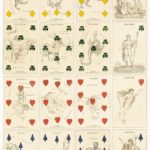
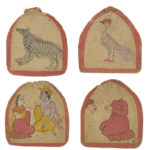
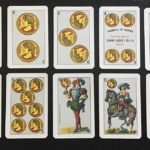
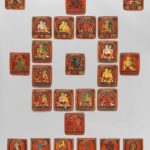
![Playing cards--Besançon tarot BESANÇON: J. JERGER, [1810]](https://allcollectiblegames.com/wp-content/uploads/2021/04/mystical-cards-tarot-french-150x150.jpg)
